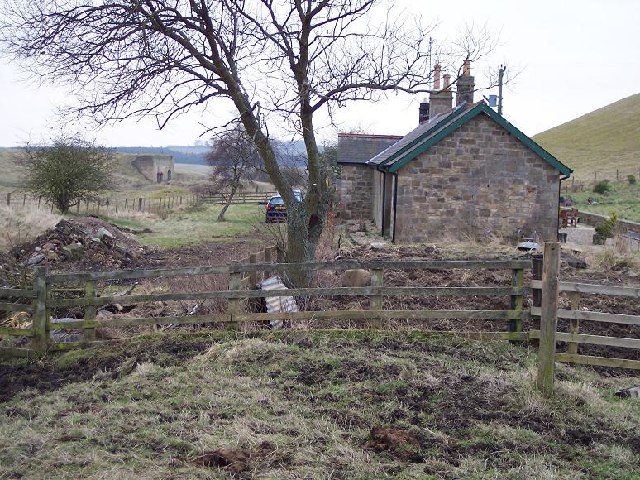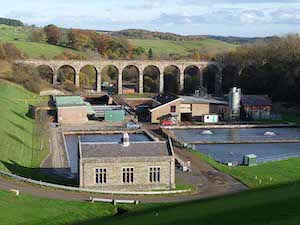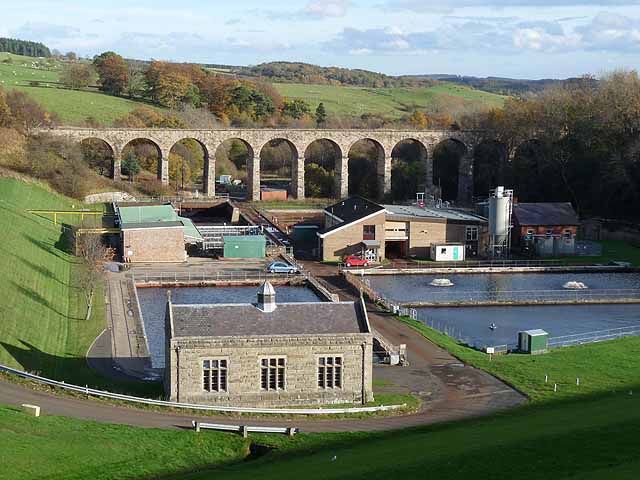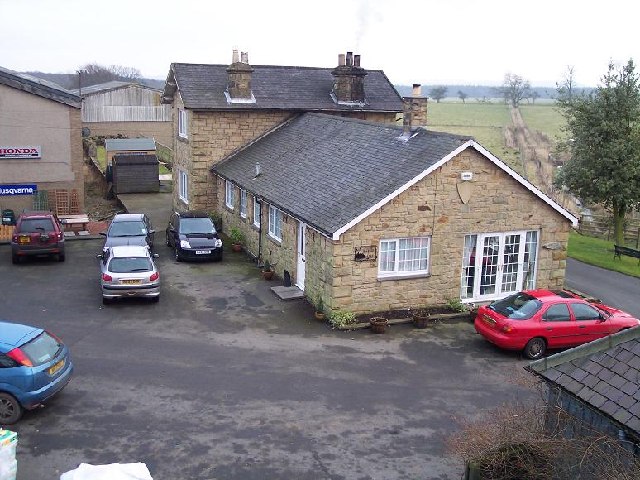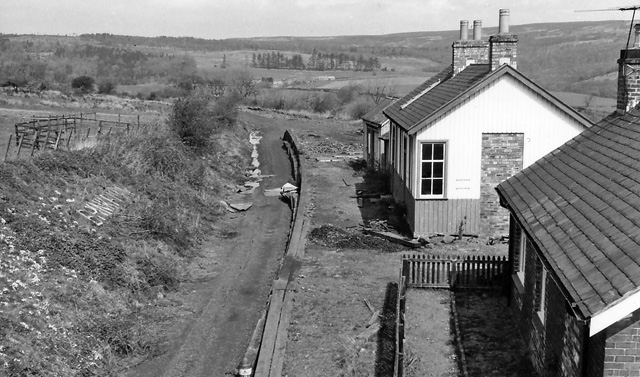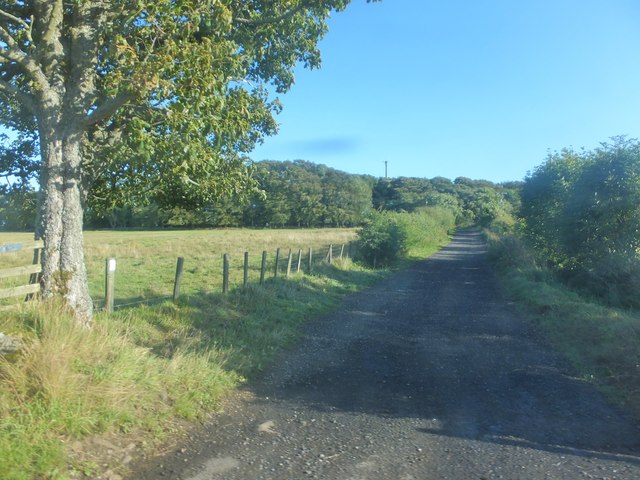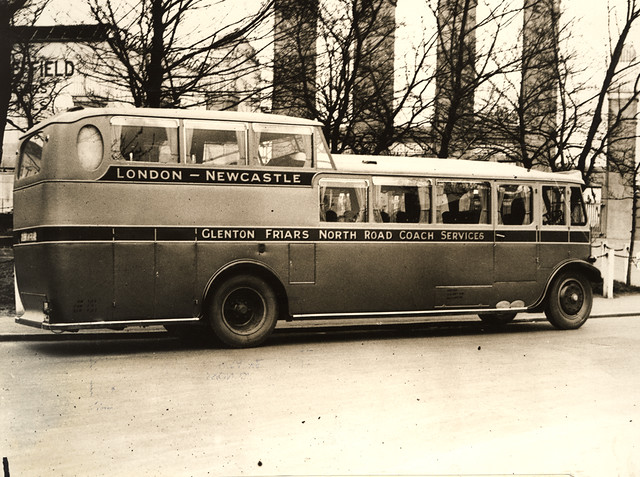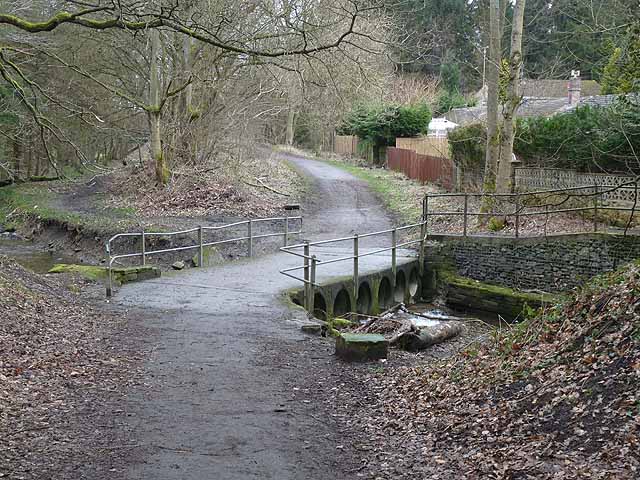Topics > Transport and Travel > Railway > Rothbury Branch Line - Northumberland Central Railway
Rothbury Branch Line - Northumberland Central Railway
The Rothbury Branch Line of the Northumberland Central Railway was a 13-mile single track railway line, which opened in 1870. It ran from Scotsgap to Rothbury, with Fontburn Viaduct built to carry the railway over the River Font. The line connected with the Wansbeck Railway at Scotsgap. The line closed to passengers in 1952 and closed completely in 1963, and later dismantled.
Stations were on the line were:
- Rothbury Station
- Brinkburn Station
- Fontburn Halt
- Ewesley Station
- Longwitton Station (originally called Rothley Station)
- Scotsgap Station (connection with the Wansbeck Railway)
The Rothbury Branch was a 13-mile single track railway line in Northumberland, England. It was built by the Northumberland Central Railway and was conceived as part of an alternative trunk route from Newcastle to Berwick.
There were serious problems raising money for the ambitious scheme, and it was scaled back to run from Scotsgap to Rothbury. It opened in 1870.
Even so, it was always short of money and had to request the North British Railway to take it, and its debt, over; it did so in 1872.
The line was never busy and closure to passenger traffic took place in 1952; after a period of limited goods operation, the line closed completely in 1963.
History
Early proposals
In 1847 the Newcastle and Berwick Railway started operation in 1847. It was created by George Hudson, the so-called Railway King, and his intention was to form part of a through railway connection from Edinburgh to London. The Newcastle and Berwick Railway later became part of the York, Newcastle and Berwick Railway.
The people of Rothbury saw the advantage of having a railway connection; the district had long been a centre for the production of lime, important in improving acidic soil for agricultural purposes, and Morpeth was a centre of demand for the mineral. It was natural to consider making a railway branch line from Rothbury to Morpeth, which was on the Newcastle and Berwick main line.
A scheme for a railway was developed, and an estimate was prepared for the construction: it would cost £95,000. However, despite the local enthusiasm, there was inadequate financial support for the scheme and it was dropped.
The Wansbeck Railway
The Border Counties Railway opened the first section of its line in 1858. This line was to link Hexham with apparently rich mineral deposits, and was stated to be the first stage of a new line, independent of Hudson's York, Newcastle and Berwick Railway, linking the area with Edinburgh. This revived consideration of a railway running west from Morpeth, and this led to the development of a scheme for a Wansbeck Valley Railway from Morpeth to Reedsmouth on the Border Counties line.
The Wansbeck Valley committee changed the name to The Wansbeck Railway and they obtained the Royal Assent for their line on 8 August 1859; the capital was set at £120,000.
They constructed their line in stages, and it opened in sections from 1862 to 1865. It passed through Scotsgap, but came no closer to Rothbury. The Company was constantly short of money and was heavily supported by the North British Railway, which saw it as a strategic means of by-passing Hudson's railways in getting access to Newcastle.
The Northumberland Central Railway
Rothbury was still an important centre for the production of lime, but the lack of a railway connection was felt more keenly than ever, and during the construction of the Wansbeck Railway, a scheme was brought forward to build a 45-mile line from Scotsgap northwards through Rothbury and Wooler to Cornhill, near to Berwick on the Kelso line of the North Eastern Railway. The line would need capital of £260,000 to construct, and the terrain to be crossed north of Rothbury was very thinly populated. The promoters must have observed that the Wansbeck line only continued with the support of the NBR, but were evidently undeterred. In fact the Wansbeck Railway was absorbed by the NBR on 21 July 1863.
A Parliamentary Bill for the line, to be called The Northumberland Central Railway, was submitted for the 1863 session; a cash deposit of £20,800 was required to do so, and the cash available to the provisional company was inadequate, so that three individuals, including Richard Hodgson of the NBR, provided the money personally.
The Bill received the Royal Assent on 28 July 1863; capital was £270,000.
The Act (as it now was) merely authorised the capital; raising it was a problem for the Company. A provisional contract with Warings, a reputable London-based contractor, was finalised, but the absence of money prevented a start. A call on subscribers brought in some money, and debate raged as to whether this should be from the Scotsgap end or the northern end. Warings were pressed to consider courses of action that would disadvantage them, and in the absence of ready money, at length they saw that the contract was vain, and asked to be relieved of it. The Company was unable to provide money to make a start, and on 7 August 1865 a difficult Shareholders' Meeting took place, which ended with agreement to abandon the proposed line north of Rothbury. The eclipse of Richard Hodgson as chairman of the North British Railway was significant in the loss of commitment to the northward extension.
A Rothbury branch line
The contract with Dowlings was cancelled, and a local contractor, Dowson, was given the task of building from Scotsgap to Rothbury. On 12 April 1867 the Company received Parliamentary authority to shorten the scheme, to make it simply a branch line to Rothbury, with authorised capital now of £75,000.
The difficulty in raising money was no less acute, and even now it was not possible to continue, and Dowson had to discontinue the work, which was hardly started. In February 1868 the Directors all offered their resignation in view of the impossible situation; a number of financial devices to get the money had been tried, all of them in vain. Most Directors were persuaded to continue. However, by the end of 1868 it had proved possible to scrape together enough money to instruct Dowson to start work.
By August 1870 it was stated that the construction was nearly complete. The NBR had been approached to work the line for the Company, but their terms were stated to be unacceptable, and the Blyth and Tyne Railway was to be approached to do so. Since running to Morpeth required the permission of the NBR it was unlikely that this arrangement would work, and in fact the NBR working arrangement was later accepted.
Opening at last
On 1 November 1870 the line opened to the public, the directors having travelled over the line the previous day.
The steepest gradient was said to be 1 in 60 and there was a twelve-arch viaduct at Fontburn. There were stations at Rothbury, Brinkburn, Ewesley and Scotsgap, and a private platform at Rothley for the use of the Trevelyan Estates. The Rothley platform was later renamed Longwitton and made public.
The working arrangement with the NBR was considered onerous by the Northumberland Central directors, but there was no alternative. Operations made a small profit in the early weeks, but this soon turned to a loss. The line had cost £95,000 to build, and the Company now owed £9,600 to contractors, as well as having incurred heavy debenture debts and issued preference shares, and it was obvious that financial disaster was imminent.
Absorbed by the North British Railway
The only way out was a sale to the NBR: this was agreed at a meeting in Newcastle on 23 February 1872, although fiercely opposed by a section of shareholders. The NBR paid off the £9,600 debt, and ordinary shares were to be guaranteed 1% until 1878. The NBR acquired the line for about 10% of its cost. This is implied to be a considerable bargain for the NBR: a prominent Northumberland Central Railway shareholder was reported as saying, at the final Shareholders' Meeting, that the NBR was being made a present of the line. It is difficult to see this. The NBR acquired a bankrupt, loss-making business, and paid its £9,600 immediate debts, paid 3% mortgages taken out by the NCR, and paid 1% on worthless NCR stock for seven years.
The acquisition was formalised by Act of Parliament of 18 July 1872.
Longwitton accident of 1875
There was a serious accident near Longwitton on 3 July 1875. A passenger train was running down the steep gradient towards Scotsgap; it had eight empty stone wagons marshalled in front of the passenger coaches, and the drawbar of one of the wagons broke away. Digging into the track, it derailed the vehicles behind it, and they plunged down an embankment; four persons lost their lives.
The Board of Trade inspecting officer, Col F H Rich commented,
The engine-driver and fireman were not aware that they had left the greater part of their train behind ... The fireman's attention was first drawn to the circumstance by three ladies, Misses Winship, who were standing in a field on the east side of the line, close to the railway fence, and who, on observing the train running over the bank, called and waved their arms as violently as they could to attract the attention of the engine-driver. The young ladies proceeded at once to give all the assistance they could to the injured passengers ...
Under the North British Railway
A cattle market was established in Rothbury in 1871, and development of the town for residential and holiday purposes, and a racecourse, improved the financial situation of the line. Nonetheless the two-hour journey time from Newcastle was a significant negative factor.
The passenger train service settled down to three trains each way daily, aligned towards Morpeth. Although journeys from Rothbury towards Reedsmouth and beyond were possible, connectional arrangements at Scotsgap were not good.
In 1873 very considerable deposits of lime and coal, as well as fireclay, started to be exploited at Longwitton. This brought large volumes of mineral traffic to the line, and the prospects looked extremely good, but in 1886 the extraction company suddenly surrendered its lease and except for a small amount of quarry working, the minerals were no longer brought to the surface.
The twentieth century
In February 1902 Tynemouth Corporation requested a siding connection to assist in the construction of Fontburn Reservoir. The siding was provided and a temporary platform, costing £180 was constructed; it opened on 12 January 1903, named White House at first but then Fontburn (or "Fontburn (Halt)"), for the use of workers, later remaining as a public station.
The main line railways of Great Britain were "grouped" by Government under the Railways Act 1921, and the North British Railway was a constituent of the new London and North Eastern Railway.
During World War II the passenger train service was reduced to two return trips daily, although from 1945 a mid-day service from Rothbury to Scotsgap and return was inserted.
The railways were nationalised by Government in 1948, and the Rothbury line became part of the Scottish Region of British Railways.
Increasingly efficient road transport caused a collapse of the passenger and goods traffic at this time, and closure was inevitable. The last passenger trains ran on 13 September 1952. A basic goods service continued, only weekly for many years, and on 9 November 1963 the Rothbury line was closed completely.
Topography
The line climbed at 1 in 67 from Scotsgap to a summit at Longwitton, then falling on the same ruling gradient to Rothbury.
Locations on the line were:
| Station | Opened | Closed | Notes |
|---|---|---|---|
| Scotsgap | 23 July 1862 | 15 September 1952 | junction station on the Wansbeck Railway |
| Rothley | 1 November 1870 | 15 September 1952 | renamed Longwitton in 1875 |
| Ewesley | 1 November 1870 | 15 September 1952 | temporarily closed 3 October–21 November 1921 |
| Fontburn | 1 June 1904 | 15 September 1952 | temporarily closed 3 October–21 November 1921 |
| Brinkburn | 1 November 1870 | 15 September 1952 | |
| Rothbury | 1 November 1870 | 15 September 1952 | temporarily closed 3 October–21 November 1921. The goods yard was used for race excursions before 1899; later there was a separate race platform. |
Visit the page: Rothbury Branch for references and further details. You can contribute to this article on Wikipedia.
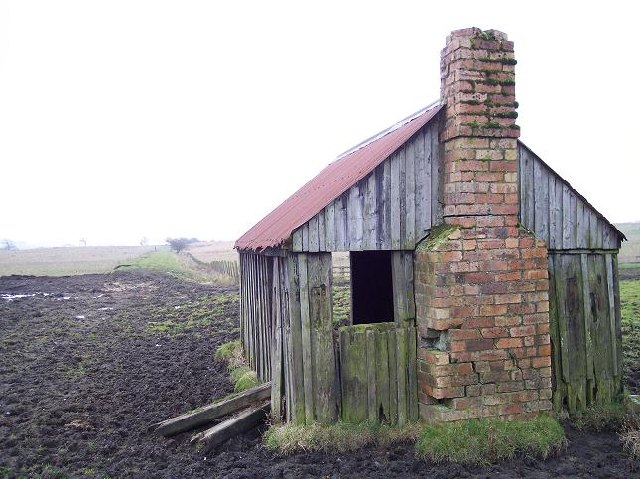
from Geograph (geograph)
Derelict former railway ganger's hut nr Rothley Shield, Northumberland
Pinned by Simon Cotterill
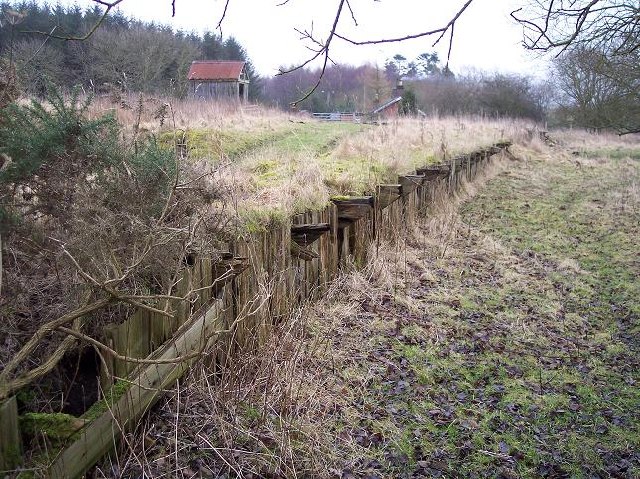
from Geograph (geograph)
Remains of platform at Ewesley station, former Rothbury branch line, Northumberland
Pinned by Simon Cotterill
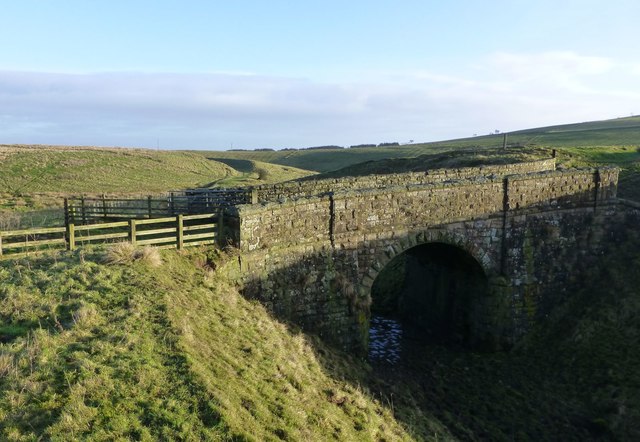
from Geograph (geograph)
A bridge over the old Northumberland Central Railway
Pinned by Simon Cotterill
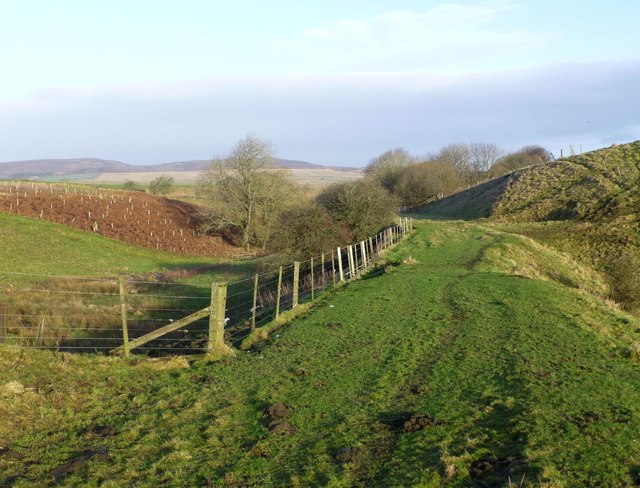
from Geograph (geograph)
Embankment on the old Northumberland Central Railway
Pinned by Simon Cotterill

from Geograph (geograph)
Ewesley Curve, former Rothbury branch line, Northumberland
Pinned by Simon Cotterill
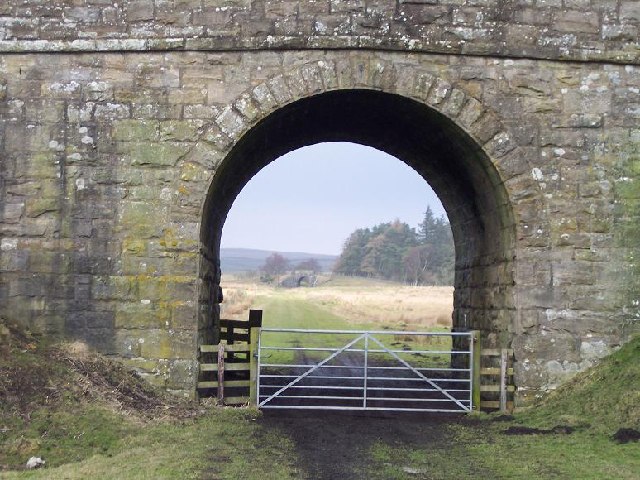
from Geograph (geograph)
Bridge carrying B6342 Rothbury road over disused railway at Rothley Lakes, Northumberland
Pinned by Simon Cotterill

Co-Curate Page
Rothbury Railway Station (1870 - 1963)
- Overview About Rothbury Railway Station Rothbury was a brick and wood railway station in Northumberland at the end of the eponymous single track Rothbury Branch that served the town …
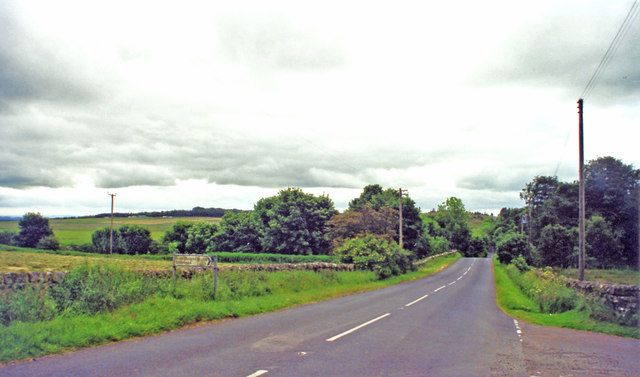
Co-Curate Page
Longwitton Railway Station
- Overview About Longwitton Station Longwitton station was a weather board and corrugated iron built railway station in Northumberland on the Rothbury Branch. Originally known as Rothley and built as …
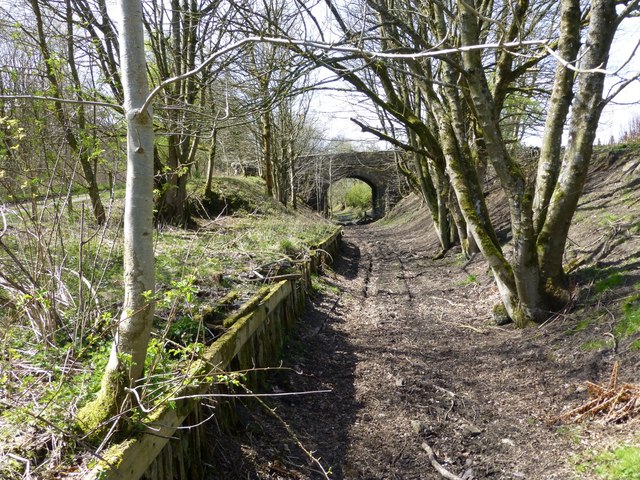
from Geograph (geograph)
Track-bed of former Northumberland Central Railway
Pinned by Simon Cotterill
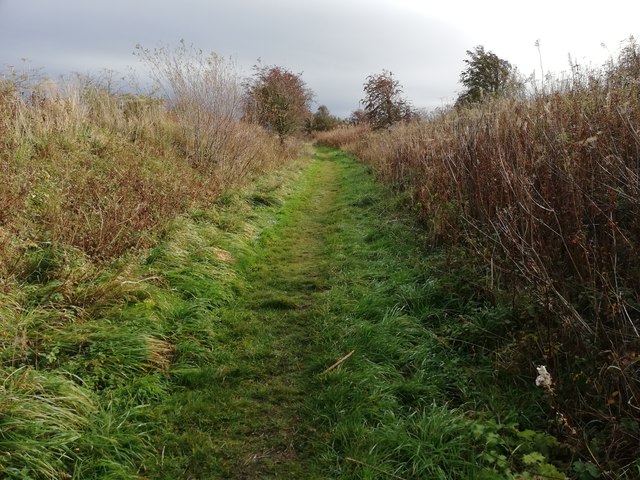
Co-Curate Page
Wansbeck Railway
- The Wansbeck Railway (or 'Wannie Line') was a single track railway, which ran from Morpeth to Redesmouth, where it made a junction with the Border Counties Railway. The line opened …


from Geograph (geograph)
Derelict former railway ganger's hut nr Rothley Shield, Northumberland
Pinned by Simon Cotterill

from Geograph (geograph)
Remains of platform at Ewesley station, former Rothbury branch line, Northumberland
Pinned by Simon Cotterill

from Geograph (geograph)
A bridge over the old Northumberland Central Railway
Pinned by Simon Cotterill

from Geograph (geograph)
Embankment on the old Northumberland Central Railway
Pinned by Simon Cotterill

from Geograph (geograph)
Ewesley Curve, former Rothbury branch line, Northumberland
Pinned by Simon Cotterill

from Geograph (geograph)
Bridge carrying B6342 Rothbury road over disused railway at Rothley Lakes, Northumberland
Pinned by Simon Cotterill

Co-Curate Page
Rothbury Railway Station (1870 - 1963)
- Overview About Rothbury Railway Station Rothbury was a brick and wood railway station in Northumberland at the end of the eponymous single track Rothbury Branch that served the town …

Co-Curate Page
Longwitton Railway Station
- Overview About Longwitton Station Longwitton station was a weather board and corrugated iron built railway station in Northumberland on the Rothbury Branch. Originally known as Rothley and built as …

from Geograph (geograph)
Track-bed of former Northumberland Central Railway
Pinned by Simon Cotterill

